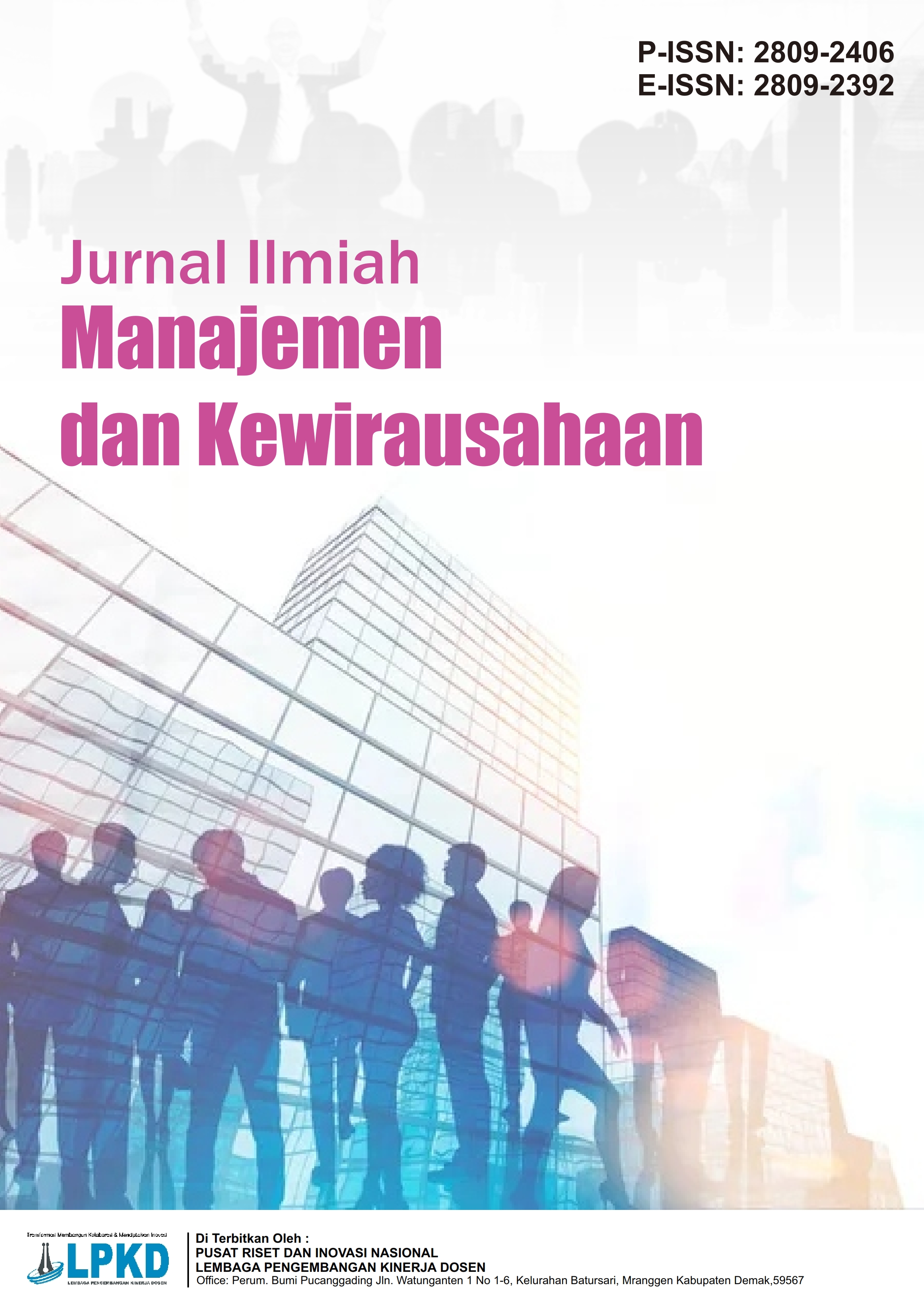Peran Human Capital Strategy dan Kepemimpinan Adaptif terhadap Ketahanan Organisasi: Studi Empiris pada PT PLN (Persero)
DOI:
https://doi.org/10.55606/jimak.v4i3.4712Kata Kunci:
adaptive leadership, human capital strategy, organizational resilience, PLN, strategic transformationAbstrak
This study aims to analyze the role of human capital strategy and adaptive leadership in strengthening organizational resilience at PT PLN (Persero), one of Indonesia's key state-owned enterprises. Amidst global challenges such as digital transformation, energy transition, and post-pandemic dynamics, the need for superior human resources and responsive leadership is increasingly critical. Using a descriptive qualitative approach, data were collected through literature studies, internal documents, and supported by relevant empirical findings. The results indicate that the integration of competency-based HR strategies and adaptive leadership significantly enhances organizational resilience to disruption. Strategies such as succession planning, digital learning, and collaborative culture have proven effective in boosting flexibility and innovation. The study provides practical implications to reinforce HR's role in PLN’s strategic transformation process in facing uncertainty.Referensi
Avolio, B. J., & Bass, B. M. (2004). Multifactor Leadership Questionnaire. Mind Garden Inc.
Becker, B., & Huselid, M. (2006). Strategic human resources management: Where do we go from here? Journal of Management, 32(6), 898–925.
Berson, Y., Da'as, R., & Waldman, D. (2016). How do leaders and their teams bring about organizational learning and outcomes? The Leadership Quarterly, 27(1), 1–9.
Boal, K. B., & Hooijberg, R. (2001). Strategic leadership research. The Leadership Quarterly, 11(4), 515–549.
Creswell, J. W. (2014). Research design: Qualitative, quantitative, and mixed methods approaches (4th ed.). Sage.
Djogo, H. T. (2024). Strategi kepemimpinan sumber daya manusia di era VUCA. Jurnal Manajemen Bisnis, 13(2), 102–117.
Kaufman, B. E. (2010). The theoretical foundation of industrial relations and its implications for labor–management cooperation. Industrial and Labor Relations Review, 64(1), 74–105.
Moleong, L. J. (2017). Metodologi penelitian kualitatif. Remaja Rosdakarya.
Rifandi, R., Ananda, T., & Pratama, R. (2024). Strategic human capital in the post-pandemic recovery: Case of AirAsia & Garuda. Jurnal Bisnis Global, 9(1), 45–60.
Robbins, S. P., & Judge, T. A. (2022). Organizational behavior (18th ed.). Pearson Education.
Sukoco, B. M., & Daryanto, A. (2023). Transformasi digital pada perusahaan BUMN: Peluang dan tantangan. Jurnal Ekonomi dan Manajemen, 14(1), 33–48.
Ulrich, D. (2016). HR from the outside in: Six competencies for the future of human resources. McGraw-Hill.
Wright, P. M., & McMahan, G. C. (2011). Exploring human capital: Putting ‘human’ back into strategic human resource management. Human Resource Management Journal, 21(2), 93–104.
Yukl, G. (2013). Leadership in organizations (8th ed.). Pearson.
Yukl, G., & Mahsud, R. (2010). Why flexible and adaptive leadership is essential. Consulting Psychology Journal: Practice and Research, 62(2), 81–93.
Unduhan
Diterbitkan
Cara Mengutip
Terbitan
Bagian
Lisensi
Hak Cipta (c) 2025 Jurnal Ilmiah Manajemen dan Kewirausahaan

Artikel ini berlisensiCreative Commons Attribution-NonCommercial-ShareAlike 4.0 International License.







